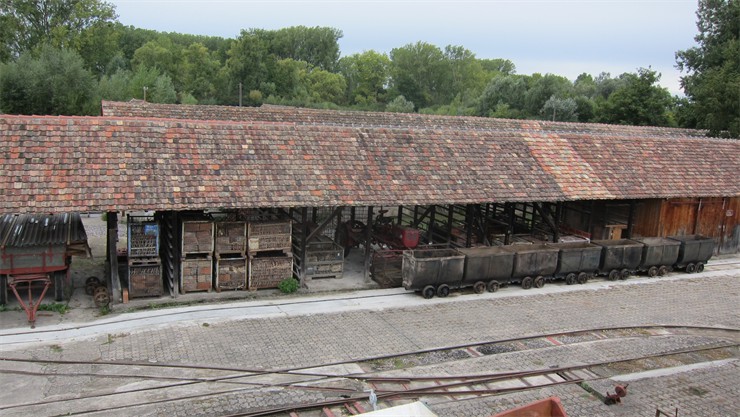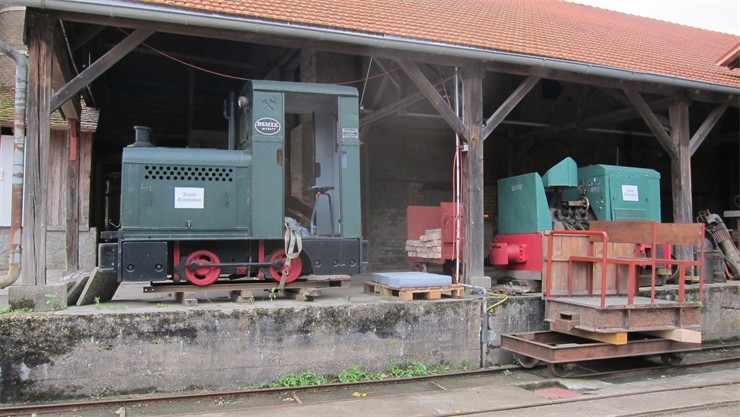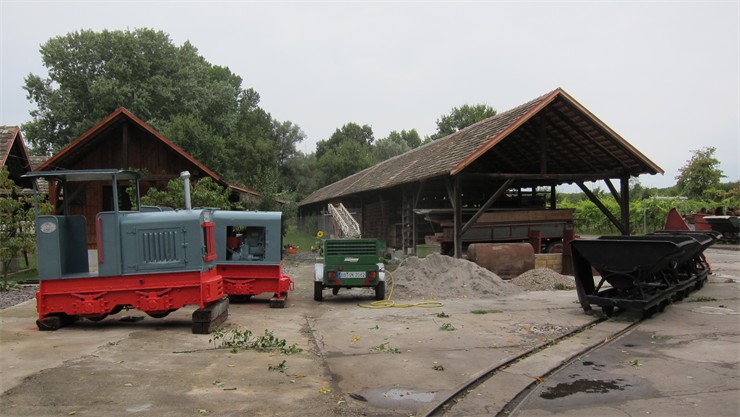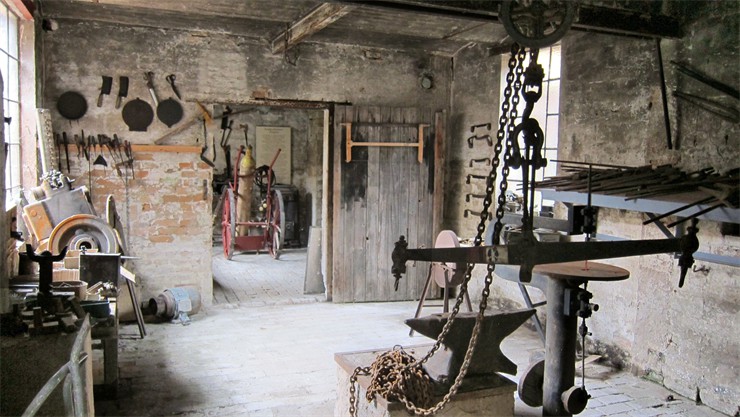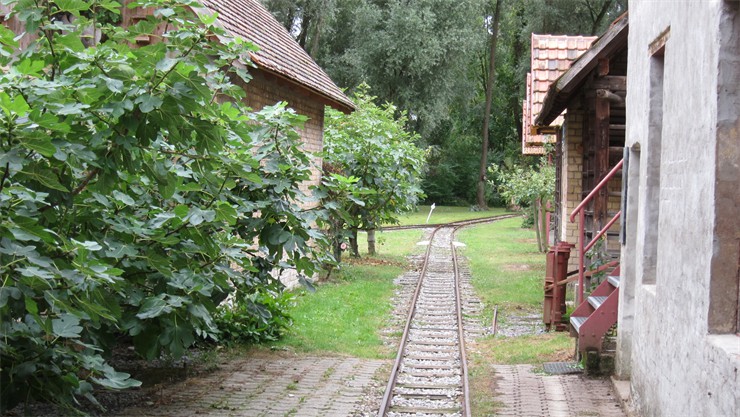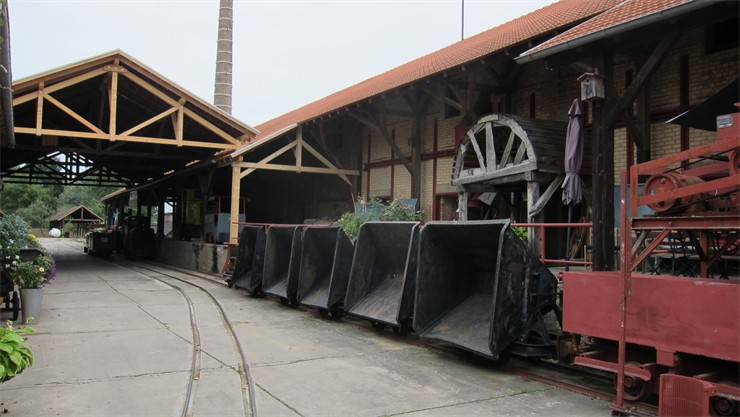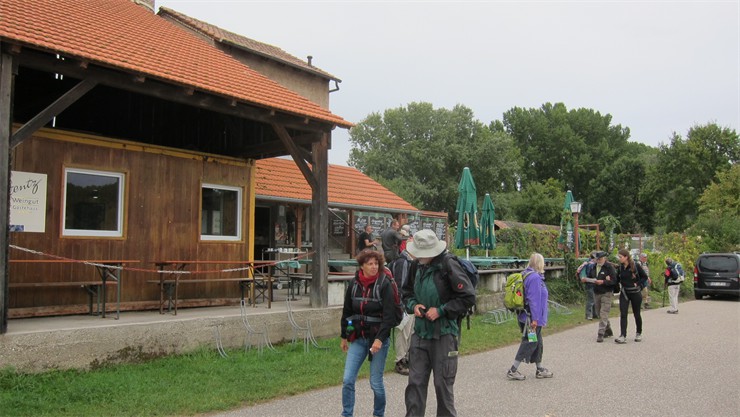After a reflection in the Jakobskirche, we leave the town of Germersheim and walk towards the Rhine. Near the banks of the Rhine we discover the remains of a former fortress. A plaque placed there clearly shows the size of the original complex.

The Royal Bavarian fortress of Germersheim was part of a fortification system in western Germany to protect against feared French attacks. Construction began in 1834 and was completed in 1861.
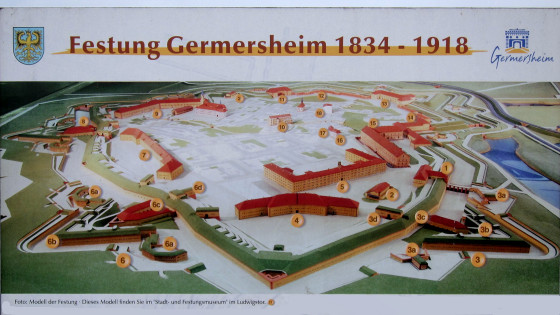
From 1878, the fortress was the location of the Royal Bavarian 17th Infantry Regiment "Orff" of the Bavarian Army. As a result of the Treaty of Versailles, most of the fortress was destroyed.

We reach the Rhine, which we follow south along the cycle path.

We stop for a coffee at the former Sondenheim brickworks. There is an opportunity to have a look around the old brickworks.

Along the Rhine, then along the embankment we continue walking southwards.

We leave the Rhine and head west to Hördt.

The church of Hördt. The forecourt of the church is our picnic spot.
The history of the village of Hördt is marked by its monastery, the Augustinian canonry founded in 1103, and its provostry. A 15 m long and 2.50 m high piece of the monastery wall has been preserved. There is evidence of visits by Hildegard von Bingen in 1171.
During the Thirty Years' War, the monks were expelled and the monastery secularised.
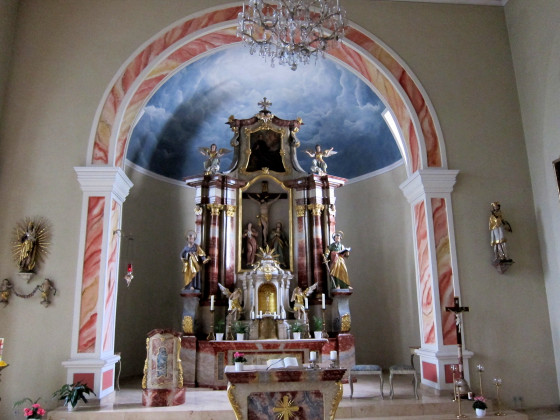
Inside the otherwise sober church we find this beautiful baroque altar and to my great delight I discover a statue of Nepomuk on the right side.

Click on it!

Between Hördt and Rülzheim we are refreshed by a short rain shower.
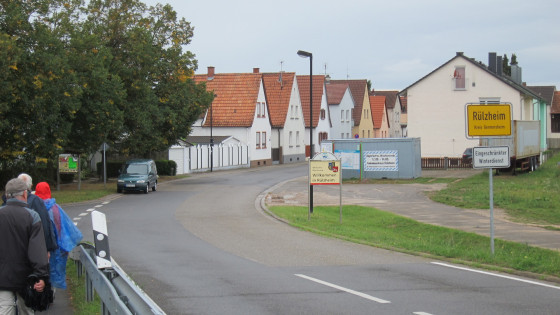
We reach Rülzheim.
The village of Rülzheim was first mentioned in 774. Rülzheim belonged to the diocese of Speyer. The Teutonic Knights were the sovereigns in Rülzheim.

We admire many beautiful timber-framed houses.
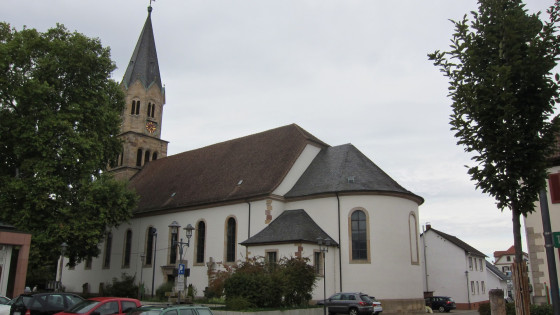
The church of St. Mauritius in Rülzheim. The west tower, built on a late Gothic substructure, dates from 1498. The present nave was built in 1767 and later extended.

From Rülzheim to Herxheim, the Way of St. James leads along endless straight paths through a forest.
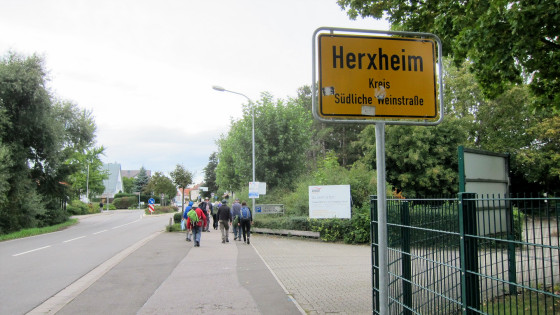
Finally, the stage destination is reached.

The Schoenstatt Centre Marienpfalz in Herxheim will serve as our hostel.
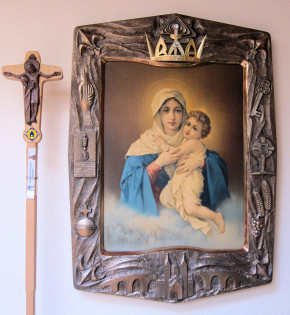
This image of the Madonna has a special significance in the Schoenstatt Movement and can be found everywhere here.
The Schoenstatt Movement is an international, spiritual renewal movement and an association of believers in the Catholic Church with an apostolic orientation. Its place of origin and spiritual centre is Schoenstatt, a district of Vallendar near Koblenz. The federally structured movement is coordinated by the so-called General Presidium, which has its headquarters in Schoenstatt.
The aim of the founder, Joseph Kentenich, was to give the Church and the faith of Christians a new, modern face. Schoenstatt can be understood as Kentenich's vision of what the Church could look like in the future if it does not want to gather dust, but continues to lead people to Jesus Christ. Source: Wikipedia
